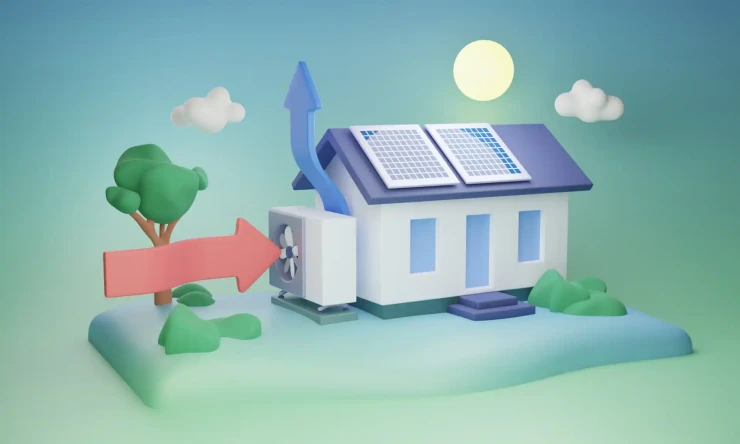In November this year European science ministers are meeting in Paris to decide on the next priorities for the European Space Agency (ESA) of which the UK is still a member. One idea they will be considering is a proposal for testing the feasibility of building commercial power stations in orbit. This revolutionary approach would require the launching of massive orbital power plants into space which would absorb the sun’s energy and wirelessly deliver it to earth to be fed into the power grid. The proposed project known as Solaris would decide whether the idea could really be used to help solve the world’s energy needs.
Space-based solar power (SBSP) could in theory satisfy all the world’s energy demands, providing nearly endless green, renewable energy to a planet in great need.
The space industry has always been at the forefront of solar power development. Since the Americans launched Vanguard 1, the first satellite in orbit and the first to generate its power using solar energy, solar panels have become the primary way of powering spacecraft which has helped to drive research. Vanguard 1’s solar cells converted just 9% of the captured sunlight into electricity. Today, the efficiency has more than doubled and continues to increase while the cost of fabrication has been falling. It’s a recipe for success.
COMPARE PRICES FROM LOCAL INSTALLERS
Compare prices from local companies fast & free
Enter your postcode to compare quotes from leading professionals. We promise to keep your information Safe & Secure. Privacy Policy
Jochen Latz, a partner at management consultant McKinsey & Company said:
“The cost of solar has been decreasing rapidly over the past 20 years, and faster than most players in the industry expected. In 2050, we expect more than 40% of the energy in the EU to come from solar power if the countries achieve their committed targets.”
Solar power is now the cheapest way to generate electricity in the Middle East and Australia and Jochen Latz believes that as the technology continues to develop this will become true in the mid-latitude countries too. This would mean that solar power would become the single largest contributing energy source to the European Union.
However, there are various problems that need to be addressed if we are to fully utilise solar panels on earth. Night-time and cloudy days are two obvious issues, but much work is in development to mitigate their effects.
Despite the enormous strides made in solar technology to improve its efficiency there is one problem which is insurmountable when generating solar power from the surface of the Earth, its atmosphere.
The molecules in our atmosphere scatter about half the sunlight out of the direct beam. This dispersed light bouncing around is what creates the blue sky that we are all so familiar with. In space there is no atmosphere, so the sun’s light is undiluted.
Aerospace engineers discovered at the beginning of the space race that if you put a solar panel in orbit, it will automatically generate about twice as much power as the same panel on earth. It is not surprising that for decades now, engineers and visionaries have been dreaming of putting solar power-producing satellites into orbit.
The basic principle is simple. A fleet of spacecraft with giant solar panels collects sunlight, before converting it into power and then beaming that energy back to Earth. You might wonder how it’s possible to wirelessly beam energy across space, but it turns out that we’ve been doing it for decades. Every telecommunications satellite since the 1960s has used a solar panel to generate electricity, which is then converted into a microwave signal and sent to Earth. On the ground, antennas convert the microwaves back into electrical energy and read the signals.
Sanjay Vijendran of ESA, who is coordinating the proposed Solaris programme said:
“The physics involved in that whole chain is exactly the same for space-based solar power, but the scale of it is completely different.”
Put in simple terms, a space-based solar power technological process involves using solar panels to collect solar energy in space with reflectors or inflatable mirrors that direct solar radiation onto solar panels, and then beaming it on Earth through a microwave or laser. The energy is then received on Earth via a microwave antenna (a rectenna).
There are several benefits with space-based solar power. For a start unlike solar panels on our roofs that can only generate electricity during the day, space-based solar power can produce continuous electricity, 24 hours a day, 99% of the year. The space environment doesn’t have night and day like earth and the satellites are only in earth’s shadow for a maximum of 72 minutes per night.
Space-based solar panels could generate 2,000 gigawatts of power constantly. This is 40 times more energy than a solar panel would generate on Earth annually.
Importantly, space-based solar power would generate 0% of greenhouse emissions unlike other alternatives energy like nuclear, coal, oil, gas, and ethanol.
Whenever the idea of space-based solar power has been investigated in the past the conclusion has always been that the cost of launching such large satellites is prohibitive. But now, things have changed.
John Mankins, a former Nasa physicist who is now president of Artemis Innovation Management Solutions declared:
“In 2015, a miracle happens. The Falcon 9 reusable rocket flies for the first time. That’s the holy grail for space solar power. It is not just possible someday – it’s inevitable in the next five or seven years.”
With the arrival of a truly reusable rocket, the cost of sending equipment into orbit is dropping rapidly. Instead of costing about $1,000 to launch every kilogram into space, Mankins now expects the price to come down to closer to $300 a kilogram.
Others are similarly optimistic. In September 2021, the Frazer-Nash Consultancy published a report for the UK government that concluded:
“Space solar power is technically feasible, affordable, and could both bring substantial economic benefits for the UK and could support net zero pathways.”
In late August, European Space Agency released its own studies on space-based solar energy, which arrived at a similar conclusion for the whole of Europe. As a result, the agency will request in November that its member states fund a three-year feasibility study into solar-power satellites to examine in detail whether such a system might become commercially viable.
Sanjay Vijendran said:
“Solaris is a bridge to check that this is really doable and that it would really help before we ask for billions of euros.”
The key players in SBSP include China, the US, and Japan, who have shown progress in terms of technology advancements, partnerships, and launch plans.
The National Space Society believes that space-based solar power could potentially dwarf all other sources of energy combined. They argue that there would be very little negative environmental impact from generating large quantities of energy from space-based solar power. If space-based solar power is feasible it could solve our current energy and greenhouse emissions problems.





























